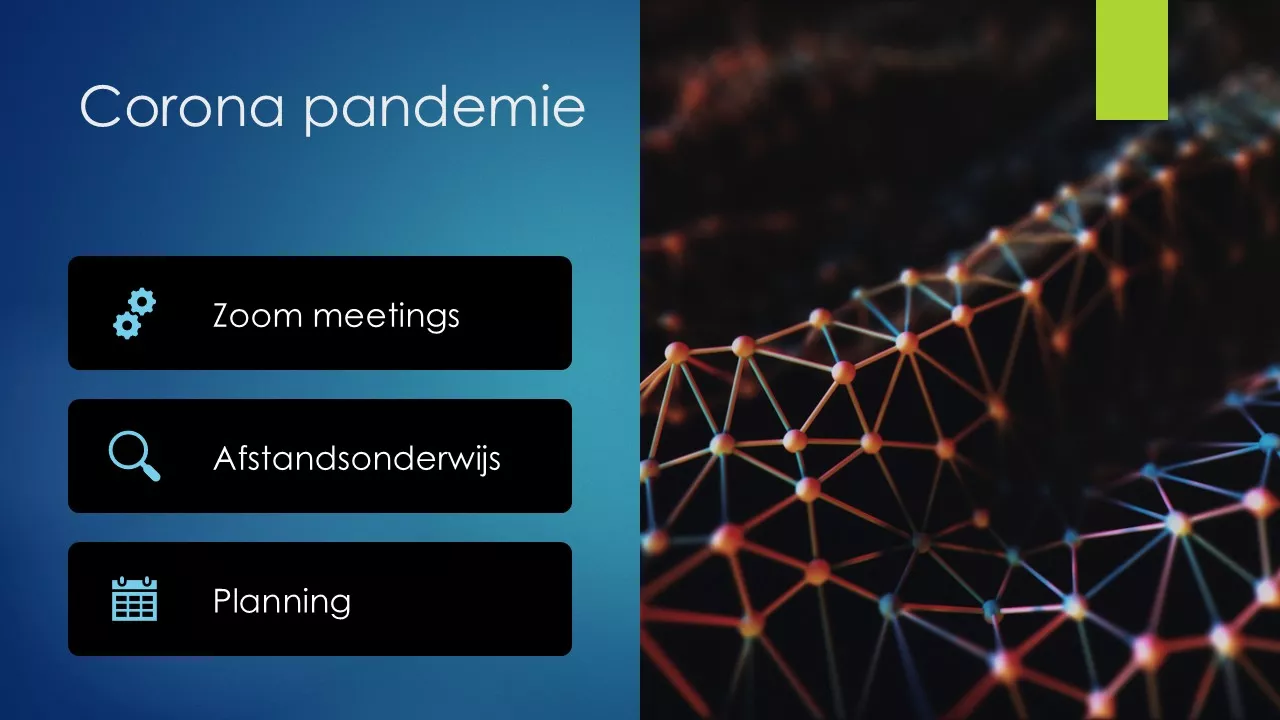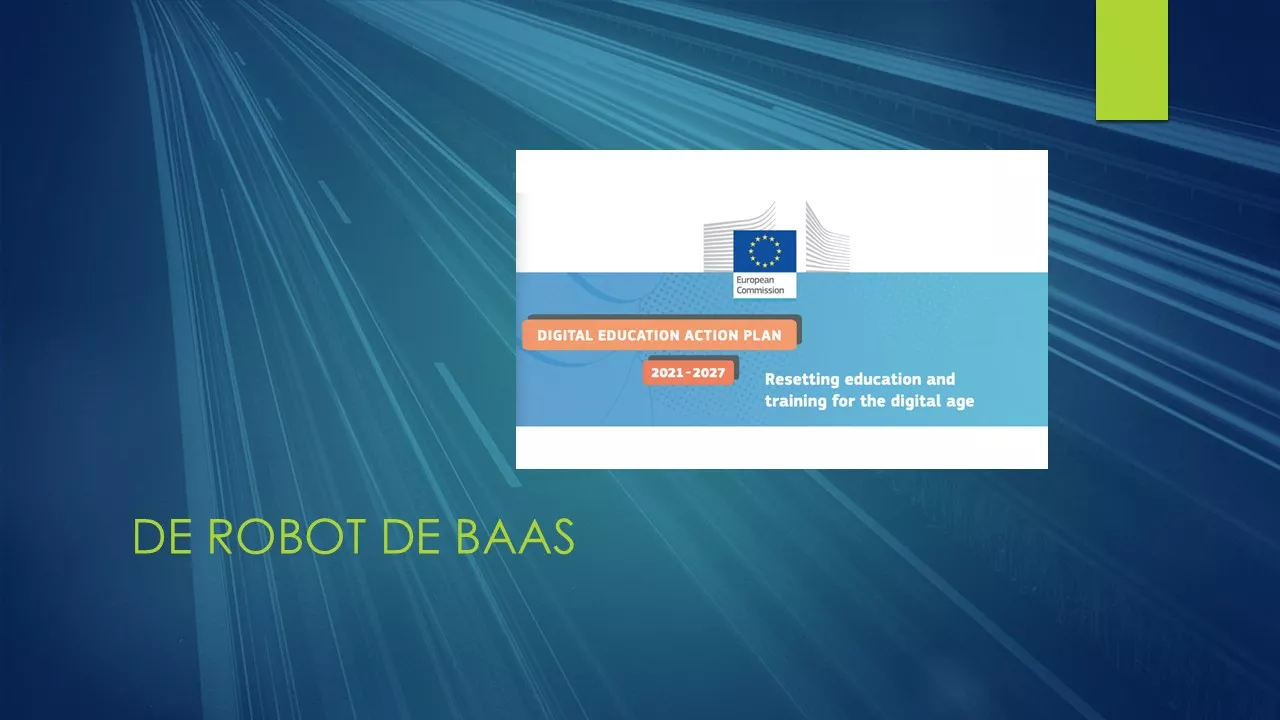Robot society: the new normal
Artificiële Intelligentie (AI): Transforming the Learning Landscape is one of EPALE’s thematic focuses for this year. Since COVID-19, the digital transformation of society has enjoyed explosive growth. A great deal has happened after the two blogs Working in a robot society and Learning in a robot society were published in 2016, at a time when AI hasn’t received a lot of attention. In the current blog, I’ll look back on this from a 2025 perspective.
The European Digital Action Plan 2018-2020
Did the e-competence master plan I advocated become a reality? No, but in 2018, the European Commission did come up with a Digital Action Plan 2018-2020. The premise was that digital technology could enrich learning in various ways and provide learning opportunities accessible to all. AI was considered a serious development that would present both opportunities and challenges: “Europe’s digital transformation will accelerate with the rapid advance of new technologies like artificial intelligence, robotics, cloud computing and blockchain. Like previous major technological advances, digitisation affects how people live, interact, study and work.” Policymakers and politicians increasingly see many opportunities arising from digital transformation, but the biggest risk today is that society is ill-prepared for that future. If education is to be the backbone of growth and inclusion in the EU, it’s crucial to prepare citizens to make the most of the opportunities and challenges of a rapidly changing, globalised world. We can become more empowered through online collaboration. Access to and use of digital technologies can help narrow the learning gap between students from high and low socio-economic backgrounds. This optimistic view has its merits, but the integration of technology in education remained limited. More than 80% of young people in Europe used the internet for social activities in 2019. Mobile access to the internet has increased significantly in recent years. But the use of technology for educational purposes has lagged behind. The action plan had three priorities: (1) making better use of digital technology for teaching and learning, (2) developing relevant digital skills and competences for digital transformation, and (3) improving education systems through better data analysis and foresight.

The pandemic
And then COVID-19 arrived. Students and teaching staff had to observe a distance of 1.5 metres and wear face masks, especially in corridors and other common areas. If a student or teacher tested positive, they had to be quarantined. In some cases, the entire class also had to go into quarantine. Schools were forced to switch to online or hybrid education. Faced with the need to provide distance learning, teachers had to adapt quickly and learn to use new technologies and digital platforms. A study by the Dutch school heads association AVS revealed that 88 percent of schools had distance education in place within two days of the lockdown, with almost all of them using digital resources. This led to greater awareness and proficiency in the use of digital resources. For students, it also meant a leap into a more digital learning environment. Although there have also been challenges, such as a lack of physical contact and less access to technology for some learners, in many cases education has become strongly focused on digitalisation. The Dutch government is still following the developments with reluctance. One initiative that did get off the ground is the creation of a digital education monitor, to give schools insight into their level of digitisation and help compare their results with the national average. The monitor will shed light on five key areas: ICT competence, digital literacy, learning resources and equipment, information security and privacy, and innovation and ethics. In addition, the government freed up funds to purchase digital equipment and improve ICT infrastructure in schools. This involved the purchasing of tablets, laptops and interactive whiteboards, amongst other things. An actual e-competence master plan, however, wasn’t created.
Digital transformation
The world is changing faster than ever before, and COVID-19 has mercilessly exposed weaknesses in our society. People must therefore be empowered to continue to acquire the necessary skills to cope with these changes throughout their lives. This requires approaches to education that are fundamentally new. Digitisation is being elevated to an end in itself. Digitisation of education presupposes converting existing physical aspects of education into digital solutions. Developing courses in an electronic form is better than digitising obsolete content. If we really want to advance the education system, we need to move from digitisation to digital transformation. The main goal of digital transformation is not just to ‘go digital’, but to add value and increase effectiveness through modern technologies. In this sense, digital technologies are ‘enablers’ rather than targets. Examples of relevant approaches include:
- preparing students for lifelong learning;
- prioritising curricula around social needs (e.g. sustainability), in addition to labour market needs;
- giving special attention to ethics, social inclusion and diversity;
- seeing students as drivers of change and engaging them in the curriculum;
- focusing on project-based and problem-based learning and;
- teaching students to be aware of their physical and mental health (resilience).

ChatGPT
Then, at the end of 2022, ChatGPT arrived. This chatbot with artificial intelligence quickly gained popularity thanks to its ability to engage in human-like conversation and help with a wide range of tasks such as writing, learning and brainstorming. It can answer questions, generate stories, summarise book plots, help with programming tasks and much more. Whether you need information, creative writing, text translation or technical support, ChatGPT can adapt to your needs and provide valuable assistance. Suddenly, AI was very close. Researchers discovered that examiners struggle to distinguish automatically generated answers by a chatbot from those given by real students. In 83% of cases, the chatbot’s answers were actually rated as better than those of real students. It quickly becomes clear that it’s better to embrace ‘the new normal’, accept AI, and adapt education accordingly. By 2024, around a quarter of the Dutch population had used generative artificial intelligence, such as ChatGPT, with the figures amongst young people and young adults (12-25 years old) being higher than amongst older adults.
European Digital Education Action Plan 2021-2027
Meanwhile, the EU has also come up with a renewed policy initiative: the Digital Education Action Plan (2021-2027), this time with more concrete intended actions, grouped around two priorities: (1) fostering the development of a high-performing digital education ecosystem and (2) enhancing digital skills and competences for the digital transformation. Digital transformation is no longer optional: there will be a structured dialogue with member states on digital education and skills. Common guidelines for teachers and educators will be developed to promote digital literacy and tackle disinformation. The European Digital Competence Framework will be updated to include AI and data-related skills and a European Digital Skills Certificate (EDSC) will be introduced.

And in the Netherlands...
Meanwhile, the Dutch government has also sprung into action. Through the programme Impuls Open Leermateriaal, the government is making money available to invest in open digital learning materials. These are publicly available, free-to-use and customisable materials. Teachers can adapt the teaching materials to perfectly meet their needs and those of learners. Also, the National Education Lab AI (NOLAI) was established in 2022 to facilitate the developments of AI and other smart technologies in primary, secondary and special education. Here, teachers, school administrators and companies join forces with scientists to work on using smart technologies in the classroom, while keeping in mind the consequences this involves. For one thing, how should teachers be trained to work with these smart technologies? And what technical criteria should these technologies meet? NOLAI also looks at ethical aspects, such as privacy.
In short, the considerable progress that has been made in the digitisation of education hasn’t led to an e-competence master plan, but more focused initiatives on digital skills and the transformation of education are underway. Slowly but surely, we’re getting there.




